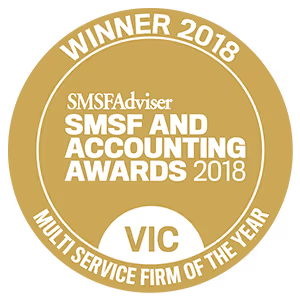Managing company tax in Australia is a key part of running a successful business, but the rules can be complex. Whether you’re a small business owner or the CFO of a large corporation, your tax obligations go beyond just paying taxes on corporate income — you also need to factor in capital gains tax, GST, payroll tax, and fringe benefits tax, all while staying compliant with Australian Taxation Office (ATO) regulations.
At Liston Newton Advisory, we help businesses like yours navigate tax obligations with confidence. Our experienced tax compliance accountants ensure you not only understand the company tax rate in Australia but also know how to calculate and manage your corporate taxes efficiently. In this guide, we break down everything you need to know — from tax rates and deductions to key filing deadlines — so you can keep your business compliant while optimising your financial position.
Let’s explore how company tax works in Australia and what you need to know to stay ahead.
How to calculate corporate income tax
The formula for calculating your corporate income tax is straightforward: Business Income - Business Deductibles = Taxable Income
Your corporate tax is a percentage of your taxable income, known as your tax rate. In Australia, the corporate tax rate is 25% for base rate entities and 30% for non-base rate entities.
Your business income includes all revenue generated from sales and services — both in Australia and overseas. It also covers income earned from stock trading, profitable one-off transactions, and capital gains.
Deductions are only legitimate if they are genuine business expenses. These might include salaries and wages for staff, maintenance and repair costs for equipment or property, and corporate travel expenses.
To be clear, your business is taxed on its declared profits — not gross revenue.

Types of company taxes in Australia
How private companies are taxed
Private companies in Australia are taxed at either 25% or 30%, depending on whether they qualify as a base rate entity. A base rate entity is a company with an aggregated turnover of less than $50 million, and with less than 80% of its sum coming from passive income sources such as rental income or dividends.
Unlike public companies, private companies have much more flexibility in distributing profits. Instead of paying out all profits as dividends, you can retain earnings within the company to reinvest in growth. If you choose to distribute dividends to shareholders, those dividends are subject to individual income tax but may be franked to pass on tax credits for company tax already paid.
Key tax considerations for private companies:
- If your company is eligible, you can benefit from the reduced tax rate of 25 per cent.
- Retained earnings remain taxed at the company level until distributed.
- Franked dividends can help reduce shareholders’ personal tax obligations.
- Private companies must comply with Division 7A rules to prevent disguised dividends through shareholder loans.
How public companies are taxed
Public companies in Australia are generally taxed at the full company tax rate of 30 per cent, as they rarely qualify as base rate entities. If you operate a public company, you’re required to distribute profits to shareholders in the form of dividends and must adhere to strict corporate governance regulations.
Public companies often issue fully franked dividends, meaning shareholders receive tax credits for the corporate tax already paid. However, shareholders must still declare dividends in their personal tax returns, where they may be taxed at their individual marginal tax rate.
Key tax considerations for public companies:
- Company tax rate — This tax rate is 30 per cent, unless classified as a base rate entity.
- Dividend taxation — Shareholders pay tax on dividends, but franking credits help offset personal tax liability.
- Regulatory compliance — Public companies face strict disclosure and corporate governance rules.
- Foreign shareholder implications — Additional tax considerations apply when distributing dividends to international investors.
Example: How corporate tax is calculated
Let’s look at a straightforward example of how company tax works in Australia.
Your private company earns $500,000 in revenue. After deducting $200,000 in business expenses and $100,000 in wages, your taxable profit is $200,000.
- If your company qualifies as a base rate entity, it pays 25% tax on its profit → $50,000 in tax.
- If it is a non-base rate entity, it pays 30% tax → $60,000 in tax.
The remaining profit — $150,000 or $140,000 after tax — can either be reinvested in the business or distributed to shareholders as dividends. If dividends are franked, shareholders receive tax credits to offset some of their personal tax liability.
[free_strategy_session]
Free corporate tax strategy session*
A 90-minute strategy session gives you a clear plan to optimise your company’s tax position.
Gain a better understanding of your tax obligations
We assess your corporate tax structure and identify opportunities for efficiency.
Receive a detailed tax strategy report
We generate a tailored report from your strategy session outlining key insights and next steps.
[/free_strategy_session]
Capital Gains Tax
Capital Gains Tax (CGT) applies when you sell an asset that’s held in or by your company. While it may seem like a separate tax, it’s actually included as part of your company’s assessable income for that year and is subject to the applicable 25% or 30% tax rate. However, your business may be eligible for tax concessions, such as small business CGT relief, which can reduce the amount of tax payable on qualifying asset sales.
Your capital gain is calculated as the difference between what you paid for the asset and the price you sell it for. Understanding how the CGT rate applies to your business assets is key to managing tax obligations effectively.
Example of CGT
You purchase your company office for $800,000 and later sell it for $1.8 million. This results in a $1 million capital gain, which is added to your company's assessable income and taxed at the applicable company tax rate — 25% or 30%, depending on your eligibility as a base rate entity.
GST
Goods and Services Tax (GST) is a flat 10% tax applied to the supply of certain goods and services.
Your company must register for GST if:
- Your corporate turnover within a 12-month period is $75,000 or more.
- You’re a not-for-profit organisation with a corporate turnover of $150,000 or more within a 12-month period.
- You provide a taxi or ride-sourcing service.
Typically, GST is added to your prices and passed on to your customers. However, some goods and services are GST-free — such as basic foods, healthcare products and services, and medical products and services.
If you're unsure whether GST applies to your goods and services, speak with our business tax accountants for expert advice.
Fringe Benefits Tax
Fringe Benefits Tax (FBT) is a tax that employers pay on benefits provided to employees outside of their salary.
For example, your company might:
- Provide an employee with access to a company car.
- Pay for employees’ gym memberships.
- Cover meals and entertainment expenses (where the employee isn’t travelling overnight).
FBT is separate from corporate income tax and is calculated based on the value of the fringe benefit. Your company must self-assess FBT liability and lodge a separate FBT return.
Generally, you can claim GST credits on fringe benefits provided and claim tax deductions on the cost of offering these benefits. If you're unsure about your FBT obligations, our tax specialists can guide you through the process.
Payroll tax
Payroll tax is a self-assessed tax based on the total wages your company pays to employees, provided it exceeds the state-specific threshold. This threshold varies depending on where your business operates.
You need to lodge and pay your payroll tax return with your state’s revenue office monthly, quarterly, or annually, depending on your reporting requirements. If you're unsure about your payroll tax obligations, we can help you navigate the regulations in your state.
[table]
[thead]
[tr][th]State/Territory[/th][th]Weekly Threshold[/th][th]Monthly Threshold[/th][th]Annual Threshold[/th][th]Tax Rate[/th][/tr]
[/thead]
[tbody]
[tr][td]VIC[/td][td]-[/td][td]$83,333[/td][td]$1,000,000[/td][td]4.85% (standard); 1.2125% for regional employers[/td][/tr]
[tr][td]NSW[/td][td]-[/td][td]Varies by month:
28 days: $92,055
30 days: $98,630
31 days: $101,918[/td][td]$1,200,000[/td][td]5.45%[/td][/tr]
[tr][td]ACT[/td][td]-[/td][td]$166,666.66[/td][td]$2,000,000[/td][td]6.85%; additional surcharges apply for large employers[/td][/tr]
[tr][td]QLD[/td][td]$25,000[/td][td]$108,333[/td][td]$1,300,000[/td][td]4.75% (≤$6.5M wages); 4.95% (>$6.5M wages); 1% discount for regional employers[/td][/tr]
[tr][td]SA[/td][td]$28,846[/td][td]$125,000[/td][td]$1,500,000[/td][td]0%–4.95%, depending on wage levels[/td][/tr]
[tr][td]WA[/td][td]-[/td][td]$83,333[/td][td]$1,000,000[/td][td]5.5%; diminishing threshold applies between $1M and $7.5M wages[/td][/tr]
[tr][td]NT[/td][td]$48,076.92[/td][td]$208,333.33[/td][td]$2,500,000[/td][td]5.5%; threshold increased from $1.5M to $2.5M from 1 July 2025[/td][/tr]
[tr][td]TAS[/td][td]-[/td][td]-[/td][td]$1,250,000[/td][td]4% for wages between $1.25M and $2M; 6.1% for wages above $2M[/td][/tr]
[/tbody]
[/table]
FAQs about business taxes
When do I pay your corporation tax
If your business is structured as a partnership, trust, or sole trader, you must lodge your tax return by 31 October each year — unless a registered tax agent lodges it on your behalf, in which case the deadline is extended to 15 May.
To ensure your company tax return is accurate and lodged on time, it’s best to work with certified Australian business accountants. We can help you stay compliant while optimising your tax position.
How to lodge a business tax return
Your business tax return is how you declare your assessable income to the ATO, allowing them to determine your tax liability.
The best way to lodge your tax return accurately and efficiently is with the help of a certified accountant. If you run a small business, you may also use accounting software like Xero to prepare your tax return. Sole traders can complete theirs directly through the ATO’s myTax portal.
Do foreign companies pay tax in Australia?
Yes, foreign companies must pay tax in Australia, but how they are taxed depends on their residency status.
If your company is not an Australian resident, it is only taxed on the income generated within Australia.
However, Australian-resident companies — including foreign companies that meet certain conditions — are taxed on their worldwide income.
A foreign company may be considered an Australian tax resident if:
- It conducts business in Australia.
- It has an Australian-based management team.
- It is controlled by Australian residents.
If your company meets these criteria and becomes incorporated in Australia, it is taxed like any Australian company — at the standard 30% corporate tax rate for non-base rate entities.
The ATO’s guide to business tax is a great place to start, but we recommend speaking with our business accountants for tailored guidance.
How are companies avoiding tax in Australia?
Some companies use legal tax planning strategies to reduce their tax liability, including:
- Structuring as a base rate entity to qualify for the lower 25% company tax rate.
- Maximising deductions for business expenses, depreciation, and R&D tax incentives.
- Using trusts and dividend franking to distribute profits in a tax-effective way.
- Offsetting capital gains with tax losses.
However, aggressive tax avoidance — such as shifting business profits to offshore tax havens — can attract scrutiny from the Australian Taxation Office (ATO). The ATO actively monitors corporate tax compliance and enforces tax law to prevent tax evasion.
If you’re looking for legitimate ways to optimise your tax position, we’re here to help. Speak with our corporate tax specialists for expert guidance on minimising tax while staying fully compliant.
How are company distributions taxed?
Company distributions — such as dividends — are taxed differently depending on how they are paid:
- Franked dividends: Companies pay tax on profits before distributing dividends. As a shareholder, you receive a franking credit for the tax already paid, reducing your personal tax liability.
- Unfranked dividends: No corporate tax has been paid on these distributions, so you must pay tax on the full amount at your marginal rate.
- Dividends to non-residents: These are subject to withholding tax, generally 15% or 30%, depending on your country of residence and any applicable tax treaties.
For shareholders, dividend payments can lead to concerns about double taxation, as company profits are taxed at the corporate level before being distributed as dividends, which are then taxed again at the shareholder’s marginal tax rate. However, Australia’s franking credit system helps mitigate double taxation by allowing shareholders to claim credits for the tax already paid by the company.
Understanding how company distributions are taxed can help you optimise your returns while staying compliant with ATO regulations. If you’d like expert guidance on tax-effective profit distribution, our tax specialists are here to help.
[free_strategy_session]
Download our tax minimisation guide
This guide could help reduce your tax bill and improve your financial position
Inside you’ll find practical strategies and essential information to help you minimise tax legally and effectively—whether you're an individual, investor or business owner.
- Understanding legitimate tax deductions and offsets
- How to structure your business to reduce tax
- The benefits of super contributions and trust structures
- Tax-effective investment strategies
- Common tax traps and how to avoid them
[/free_strategy_session]
The final word
As you can see, there are several key tax requirements a company structure must comply with. However, this is not a comprehensive list — there may be state and territory-specific taxes that apply to your company, depending on its structure and business activities.
Our Liston Newton Advisory tax accountants can guide you through each tax requirement relevant to your company. Get in touch with us today to discuss your tax obligations and how we can help ensure your business is fully compliant. If you’re looking for broader financial strategies, you may also want to explore our virtual CFO services for expert support in managing your company’s financial success.
[general_awards][/general_awards]





.jpg)
